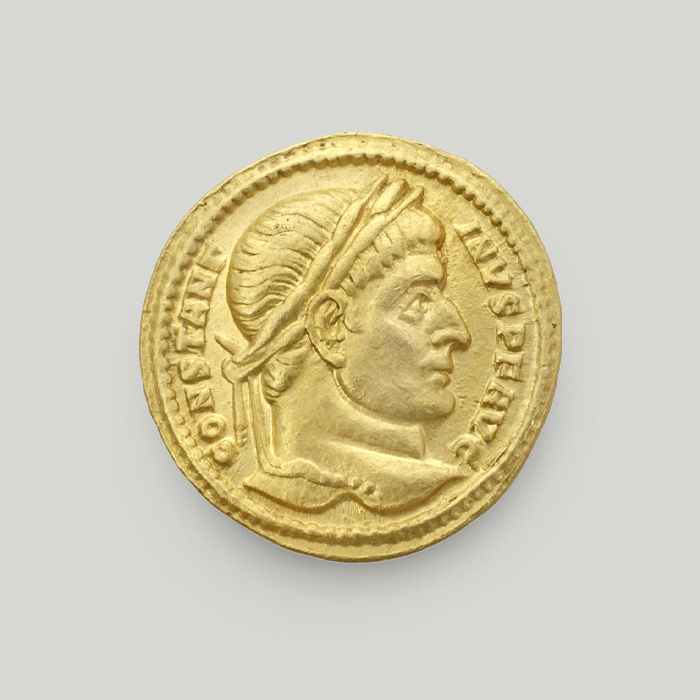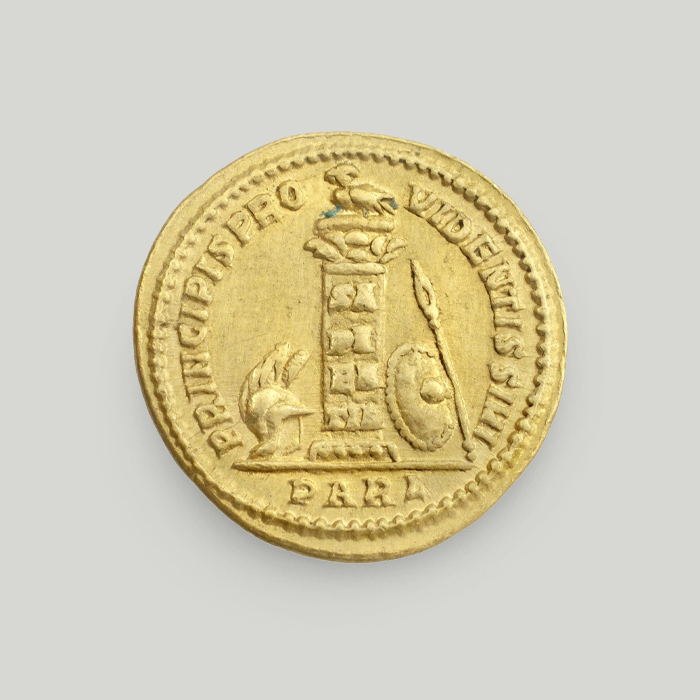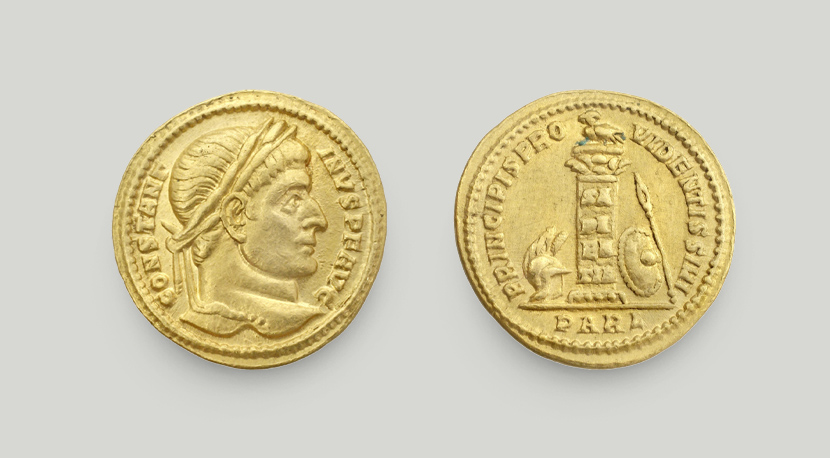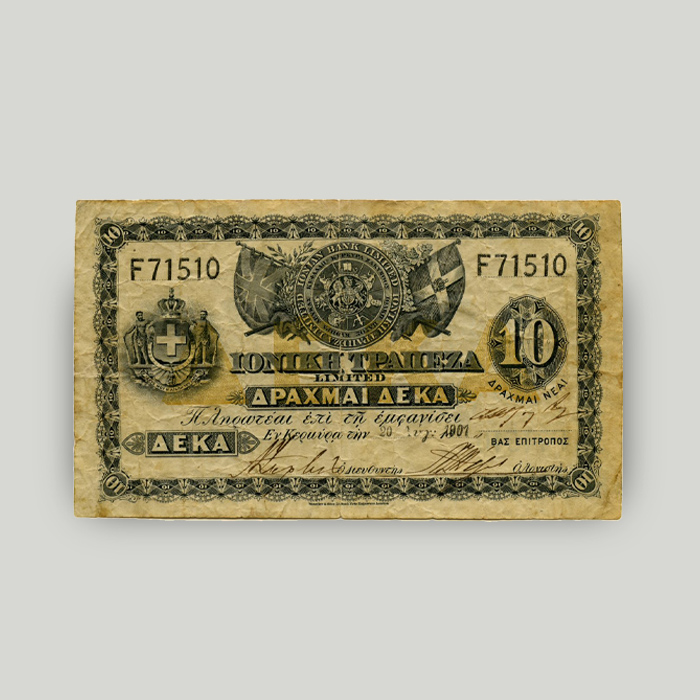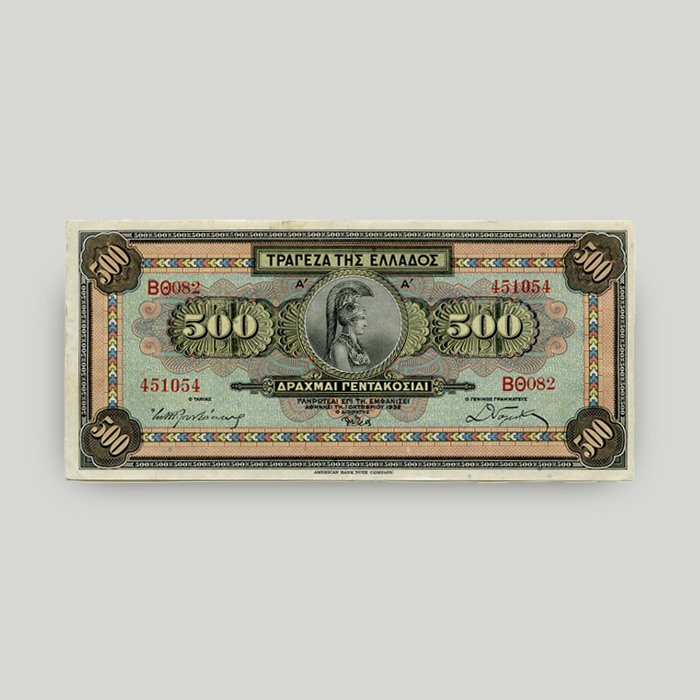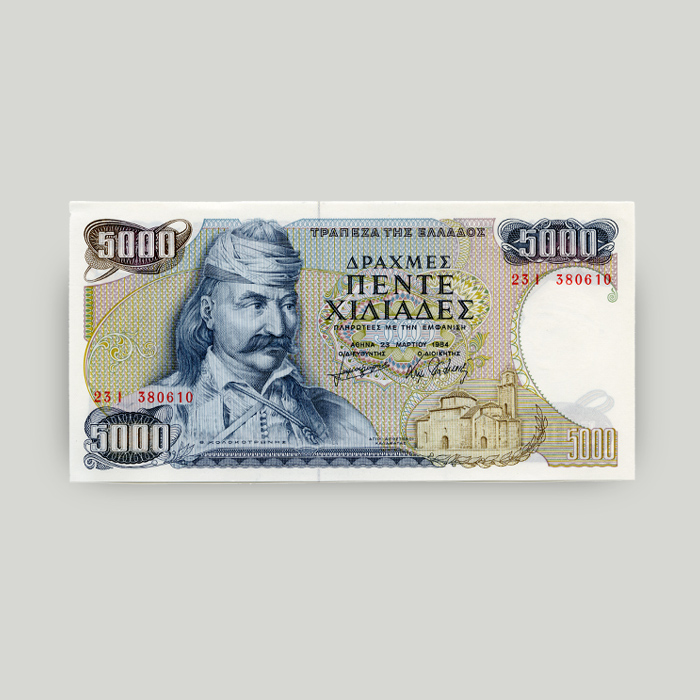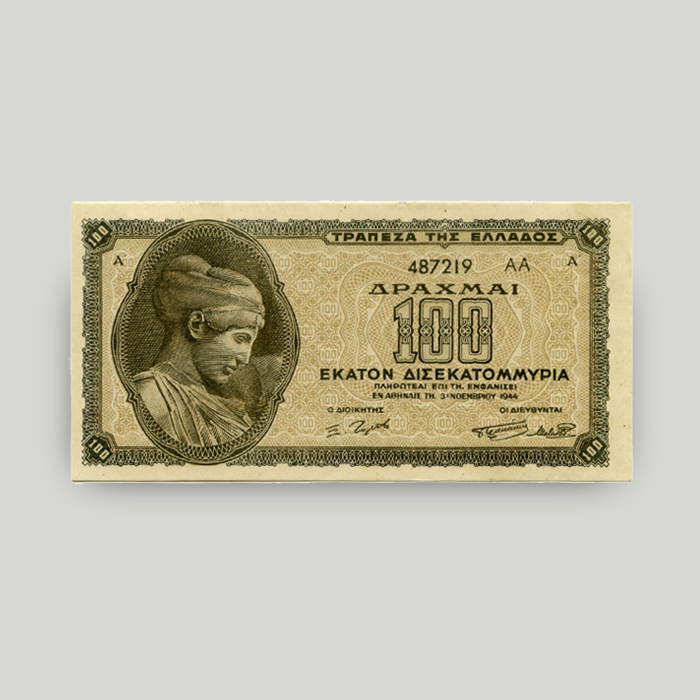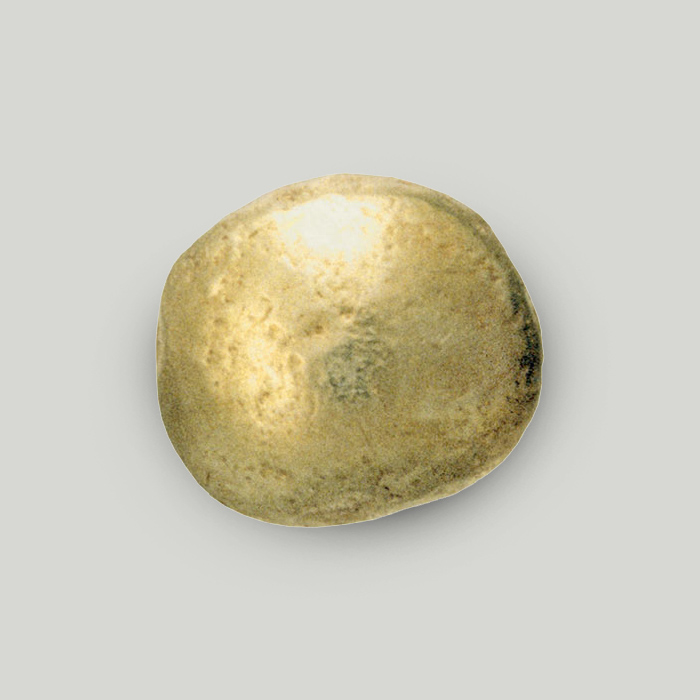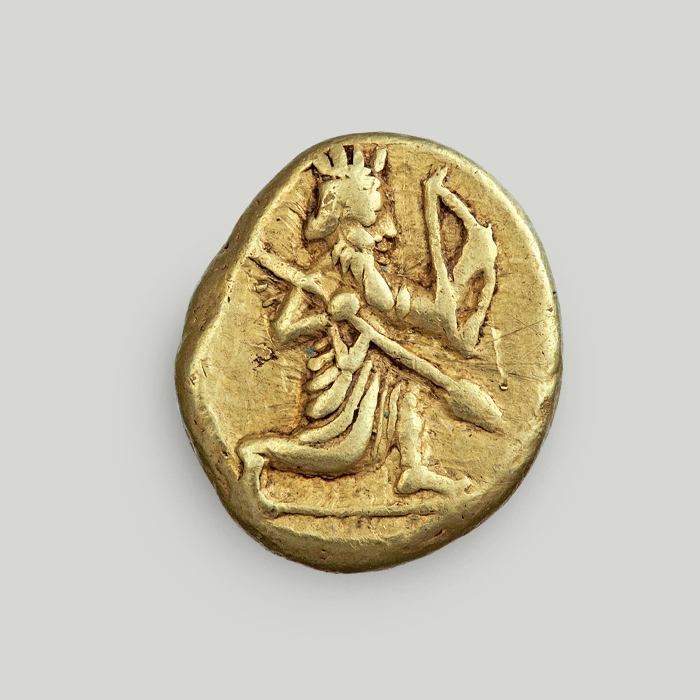Gold solidus of Constantine the Great
Constantine the Great was the first Roman emperor to convert to Christianity. His reign marked the beginning of a new era and of the long history of the Byzantine Empire, which spanned the entire Eastern Mediterranean. Constantine introduced the solidus as the new gold coin of his empire. The obverse of the coin depicted the head of the emperor at that time and was the strong currency of the Byzantine era.
Obverse
Head of Constantine the Great with legend reading CONSTANTI NVSPFAVG, i.e. Constantinus P(ius) F(elix) Aug(ustus), which is Latin for “Constantine, the pious and blessed Augustus.” The type and legend are enclosed in a circular dotted border.
Reverse
Column with the word SA PI EN TIA (wisdom) inscribed on it. An owl is seated atop the column. It also has a helmet to the left of the column, and a spear and shield to the right. All around the type, the legend reads PRINCIPISPRO VIDENTISSIMI, which is Latin for “of the discerning rulers”. This is, of course, in praise of the emperor. The type and legend are enclosed in a circular dotted border.
Constantine the Great and Constantinople
Constantine I, also known as Constantine the Great, was a Roman emperor. He was born in Naissus, in the region of Dacia (present-day Niš, Serbia). His mother would later be canonised by the Eastern Orthodox Church as Saint Helena.
In 324 CE Constantine moved the capital of the Roman Empire from Rome to Byzantium, an ancient colony of the Greek city of Megara.
He expanded the nucleus of the city, built new structures and embellished it with numerous works of art from other regions. He renamed the city Constantinople (Greek for “Constantine’s city”).
The new city was consecrated in 330 CE with every formality, including a litany and sports games. This year marks the beginning of a new era and of the long history of the Byzantine Empire, which spanned the entire Eastern Mediterranean.
The first Christian Roman emperor
Constantine was the first Roman emperor to convert to Christianity. He played a key role in the negotiations leading to the Edict of Milan, issued in 313 CE to allow free worship for all religions in the Roman Empire.
The Church of the Holy Sepulchre in Jerusalem was built upon his own and his mother Helena’s instruction. It was and still is the holiest of places for all Christianity.
Solidus, the currency of the empire
Constantine the Great introduced the solidus as the new standard gold coin of the empire. The obverse bore the likeness of the emperor at the time.
For people living in the Byzantine Empire, the emperor was God’s chosen one on Earth. This is why almost every single Byzantine coin depicts the emperor.
The gold solidus became Byzantium’s new, powerful currency. It was soon used in the greatest part of the known world. From the 11th century CE onwards, it became known as the histamenon. A bronze coin called follis was introduced in the 5th century and used until the 11th century CE.
Various coins of many names and denominations were struck during the time of the Byzantine Empire.
Coinage in the Byzantine world
Gold, silver and bronze coins were used at the same time in the Byzantine Empire. The Empire’s economy was based on monetary transactions. And there were plenty of coins to go around in large urban centres.
Gold coins were intended for government and administrative purposes, while bronze ones were used for everyday transactions and in small local markets.
The coin in our activities
The gold solidus of Constantine the Great is part of the material in our travelling museum kit Currency and Transactions. From Yesterday to Nowadays of the Alpha Bank Numismatic Collection, intended for primary school students.
The purpose of the programme is to familiarise students with the history of coins and its Greek beginnings, as well as their types, circulation and use in transactions.
The Alpha Bank Numismatic Collection is not open to the public.
Research visits to the Numismatic Collection can be organised upon request.
Contact us to book your visit.
